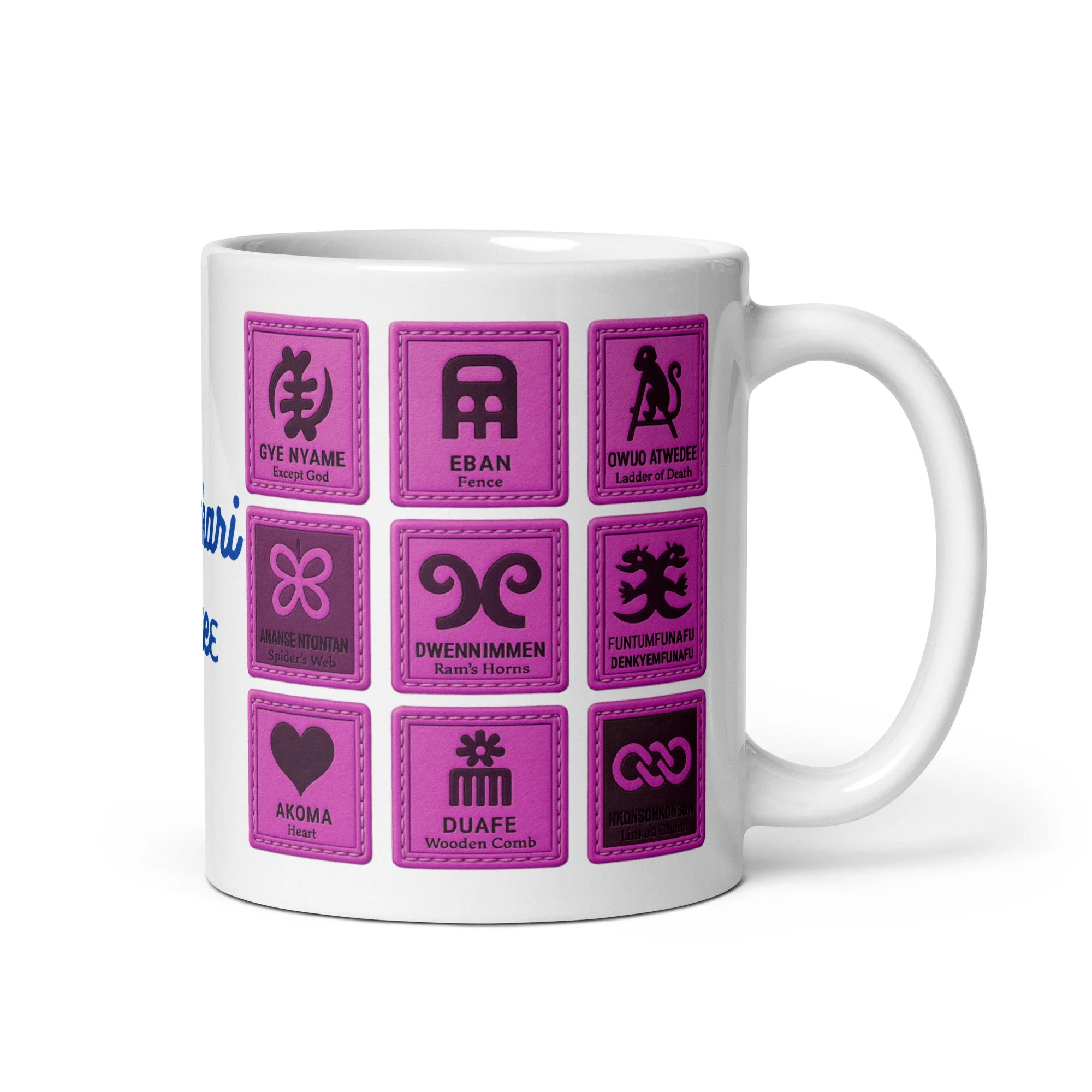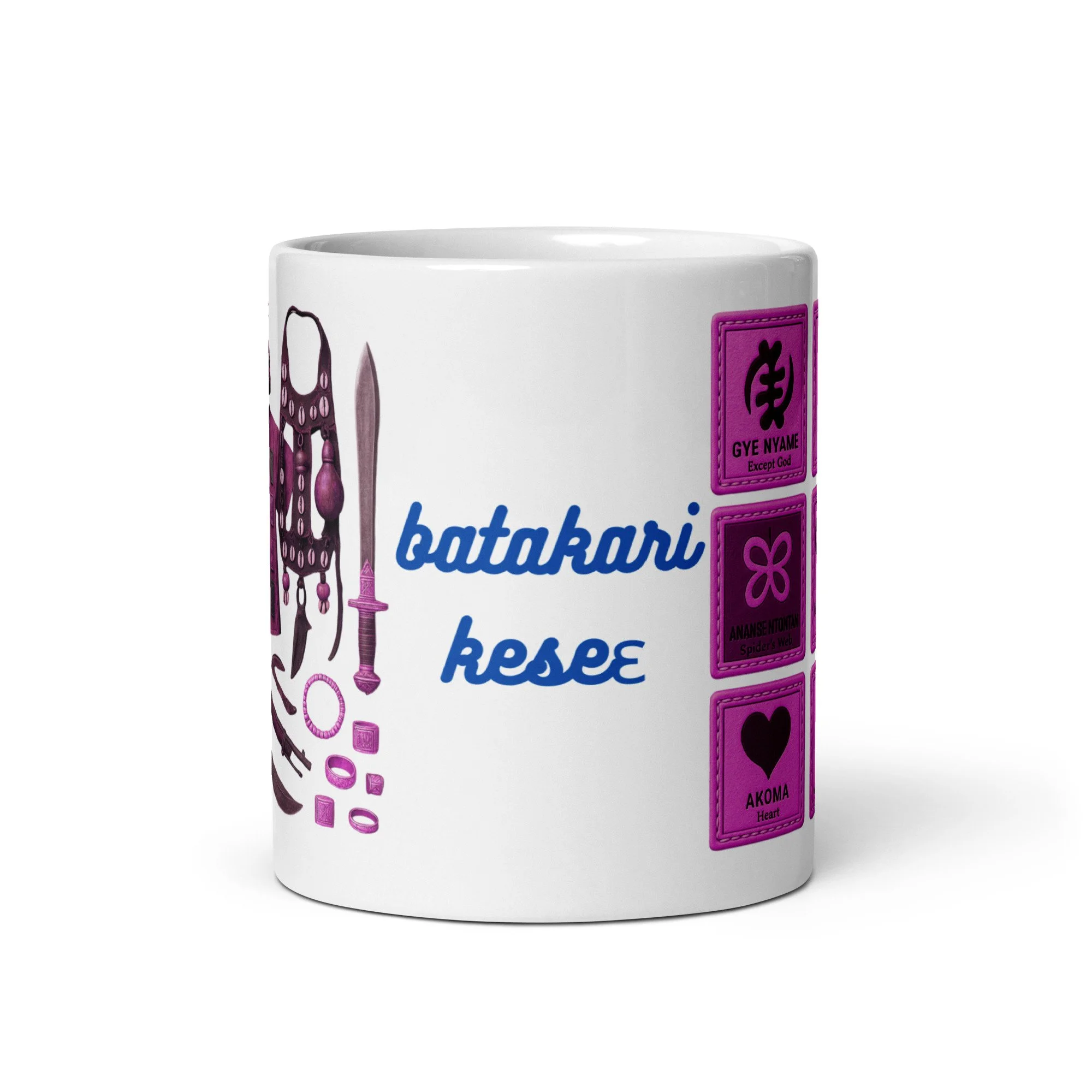 Image 1 of 3
Image 1 of 3

 Image 2 of 3
Image 2 of 3

 Image 3 of 3
Image 3 of 3




batakari keseɛ
$22.00
The Ashanti war regalia, especially the iconic Batakari Keseɛ (great war smock), was more than clothing—it was a fusion of spiritual fortification, martial identity, and cultural artistry.
Worn by warriors and leaders such as Yaa Asantewaa, the war smock was handwoven and densely fortified with charms, amulets (suman), and leather patches stitched across the chest, shoulders, and back. These inserts often contained Quranic verses, sacred herbs, and ritual inscriptions, believed to protect the wearer from bullets and curses.
The regalia was assembled under spiritual guidance. Akomfo (traditional priests) and mallams (Islamic clerics) collaborated to bless and empower the garment, marking it as a sacred defense in battle. Each item—whether a dangling brass charm, sewn-in leather packet, or carved talisman—symbolized a personal oath, ancestral blessing, or spiritual shield.
Accompanied by ritual staffs, kente sashes, and firearms in later centuries, Ashanti war regalia became a striking symbol of resilience, identity, and sovereignty. It was worn not only to fight but to proclaim: we are protected, and we do not yield.
• Ceramic
• 11 oz mug dimensions: 3.8″ (9.6 cm) in height, 3.2″ (8.2 cm) in diameter
• Lead and BPA-free material
• Dishwasher and microwave safe
• Blank product sourced from China
This product is made especially for you as soon as you place an order, which is why it takes us a bit longer to deliver it to you. Making products on demand instead of in bulk helps reduce overproduction, so thank you for making thoughtful purchasing decisions!
Worn by warriors and leaders such as Yaa Asantewaa, the war smock was handwoven and densely fortified with charms, amulets (suman), and leather patches stitched across the chest, shoulders, and back. These inserts often contained Quranic verses, sacred herbs, and ritual inscriptions, believed to protect the wearer from bullets and curses.
The regalia was assembled under spiritual guidance. Akomfo (traditional priests) and mallams (Islamic clerics) collaborated to bless and empower the garment, marking it as a sacred defense in battle. Each item—whether a dangling brass charm, sewn-in leather packet, or carved talisman—symbolized a personal oath, ancestral blessing, or spiritual shield.
Accompanied by ritual staffs, kente sashes, and firearms in later centuries, Ashanti war regalia became a striking symbol of resilience, identity, and sovereignty. It was worn not only to fight but to proclaim: we are protected, and we do not yield.
• Ceramic
• 11 oz mug dimensions: 3.8″ (9.6 cm) in height, 3.2″ (8.2 cm) in diameter
• Lead and BPA-free material
• Dishwasher and microwave safe
• Blank product sourced from China
This product is made especially for you as soon as you place an order, which is why it takes us a bit longer to deliver it to you. Making products on demand instead of in bulk helps reduce overproduction, so thank you for making thoughtful purchasing decisions!
The Ashanti war regalia, especially the iconic Batakari Keseɛ (great war smock), was more than clothing—it was a fusion of spiritual fortification, martial identity, and cultural artistry.
Worn by warriors and leaders such as Yaa Asantewaa, the war smock was handwoven and densely fortified with charms, amulets (suman), and leather patches stitched across the chest, shoulders, and back. These inserts often contained Quranic verses, sacred herbs, and ritual inscriptions, believed to protect the wearer from bullets and curses.
The regalia was assembled under spiritual guidance. Akomfo (traditional priests) and mallams (Islamic clerics) collaborated to bless and empower the garment, marking it as a sacred defense in battle. Each item—whether a dangling brass charm, sewn-in leather packet, or carved talisman—symbolized a personal oath, ancestral blessing, or spiritual shield.
Accompanied by ritual staffs, kente sashes, and firearms in later centuries, Ashanti war regalia became a striking symbol of resilience, identity, and sovereignty. It was worn not only to fight but to proclaim: we are protected, and we do not yield.
• Ceramic
• 11 oz mug dimensions: 3.8″ (9.6 cm) in height, 3.2″ (8.2 cm) in diameter
• Lead and BPA-free material
• Dishwasher and microwave safe
• Blank product sourced from China
This product is made especially for you as soon as you place an order, which is why it takes us a bit longer to deliver it to you. Making products on demand instead of in bulk helps reduce overproduction, so thank you for making thoughtful purchasing decisions!
Worn by warriors and leaders such as Yaa Asantewaa, the war smock was handwoven and densely fortified with charms, amulets (suman), and leather patches stitched across the chest, shoulders, and back. These inserts often contained Quranic verses, sacred herbs, and ritual inscriptions, believed to protect the wearer from bullets and curses.
The regalia was assembled under spiritual guidance. Akomfo (traditional priests) and mallams (Islamic clerics) collaborated to bless and empower the garment, marking it as a sacred defense in battle. Each item—whether a dangling brass charm, sewn-in leather packet, or carved talisman—symbolized a personal oath, ancestral blessing, or spiritual shield.
Accompanied by ritual staffs, kente sashes, and firearms in later centuries, Ashanti war regalia became a striking symbol of resilience, identity, and sovereignty. It was worn not only to fight but to proclaim: we are protected, and we do not yield.
• Ceramic
• 11 oz mug dimensions: 3.8″ (9.6 cm) in height, 3.2″ (8.2 cm) in diameter
• Lead and BPA-free material
• Dishwasher and microwave safe
• Blank product sourced from China
This product is made especially for you as soon as you place an order, which is why it takes us a bit longer to deliver it to you. Making products on demand instead of in bulk helps reduce overproduction, so thank you for making thoughtful purchasing decisions!
